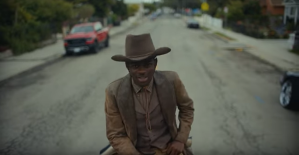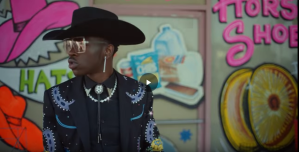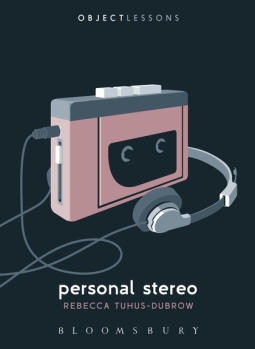Marshall McLuhan argued that money is communication. This rings particularly true at a time when so many platforms are entering the payments space. The US payments app Venmo has created a social network for payments, while the Chinese mobile messaging app WeChat has created social and playful ways of exchanging payments as messages, even incorporating the traditional Chinese ‘Hung Bao’ (red envelopes) into the payments process.
At the same time, communication is now money. Platforms with a legacy in information and data are concerned with the circulation of value, going so far in some instances as to produce their own money-like instruments. This includes not only cryptocurrencies but also the use of things like phone credit, SMS, instant messages, data and loyalty as a means of payment. Companies like Safaricom and Vodafone are de facto banks in the Global South. The platform Amazon, with a legacy in e-commerce, cloud computing and artificial intelligence, is opening a checking system and is rumoured to be applying for a financial license. Companies like Google and Apple are hustling around digital wallets and payments.
The exemplar is China, where Alipay and WePay are the ‘superapps’ of payment, creating an integrated environment where users can message or send payments to friends, order a taxi, buy their groceries and apply for a loan all in the same application. Alibaba, the Chinese retail and AI conglomerate that’s bigger than Amazon, founded Alipay in 2004 as a payments platform for in-app purchases. They quickly expanded to include peer-to-peer payments, store payments, and, over time, its own financial services company, ANT financial, that offered customers products based on their performance on the app. ANT financial later released Sesame Credit scoring, a new algorithmic credit rating based on data gleaned from the Alipay app and additional social network activity such as who users are friends with and what they share online. And in a culture where grandparents pay for groceries with their smartphones and the poor don QR codes to accept passing donations, there’s plenty of data to choose from.
Recently, people have been asking if this is a uniquely Chinese phenomenon and if not, who is set to become the WeChat or AliPay of the Western world? Will it be Apple, with Apple Pay and their recent launch of the Apple Card? Or maybe the bank of Amazon? The most recent is Facebook’s announcement that it is developing a digital cryptocurrency called Libra alongside a payments app, Calibra. The venture is supported by 28 investing companies that include network operators and Telcos (Vodafone); microlenders (Kiva); Payments providers (Visa, MasterCard, Paypal, Stripe, Coinbase), venture capital (Ribbit, Thrive), E-commerce (Spotify, EBay) and sharing platforms (Uber, Lyft). Banks are notably absent from the consortium.
It’s early days, but what exactly are Facebook setting out to do with Libra?
#1 Facebook are interested in the 1.7 billion people in the world who have access to a mobile phone but no bank account.
The Libra whitepaper waxes lyrical about money as a public good, the world’s underbanked and their desperate need for financial inclusion. Catering to the unbanked isn’t a new proposition for an ICT company. The best example is M-Pesa, a mobile money transfer service founded in 2007 and run by Vodafone that allows for payments and financing through simple SMS services. Crucially this allows for secure and safe forms of remittance for people who are working abroad and sending money home or transferring money from place to place.
For a vast portion of the world for which Facebook is already synonymous with ‘The Internet’, using the platform for domestic and global remittances might seem like the logical next step. In a nutshell, Facebook aren’t offering a solution to a problem that isn’t being solved by innovations like M-Pesa, or even BitPesa, a payments platform that uses blockchain settlement for fast, secure payment to and from Africa. But it’s probably in a position to leverage its existing monopoly to eclipse other solutions.
#2 The business model of Libra isn’t about transactional data, at least not initially.
Hearing Facebook want to have anything to do with payments will undoubtedly set alarm bells ringing. Platforms entering into online payments have adopted a business model that, like their other services, is often less interested with transaction fees and pay-per-use than with monetising data. In other words, this is usually less about charging for transferring payments from place to place like Western Union, or transaction fees like MasterCard and more concerned with monetising transactional data for advertising (if you bought this you’ll like this), or risk (people who buy violent video games may default on loans quicker than those who buy stair gates for their small children).
Considering that Facebook’s business model is based around data monetisation and positioning itself at the centre of a broad online advertising eco-system, do we really want them also handling our transactional data?
This said, the business model doesn’t appear to be based around transactional data, or at least not initially. Instead it’s based on a more traditional model of transaction fees. If instated, Libra will charge users a small fee for every transaction, similar to the way the cryptocurrency Ether charges ‘Gas’ to execute smart contracts. The goal here is to use the existing monopoly of Facebook to create a payments monopoly and siphon off some of the fees currently going to incumbents like Western Union, Mastercard and relatively new entrants like M-Pesa.
#3 But this doesn’t mean that Facebook isn’t trying to position itself as a superapp in the near future.
While most of the whitepaper is dedicated to discussions of how Libra can be used to liberate the poor and underbanked from financial insecurity, ushering forth a future where a Kenyan businesswoman can use the app to order a ride-share and pay for it with Libra tokens, there is mention of the possibility of other services such as loans and risk assessment in the future. One can presume that at this point the transactional data coupled with social media data (what you like, who your friends are etc.) will provide the ideal basis for in-app scoring and assessment.
Questions of financial services and risk assessment also touch on another offshoot of payments and remittances – KYC (know your customer) or, in other words, prove your identity. As Josh Constine puts it, ‘the 1.7 billion people who lack a bank account might choose whoever offers them a financial services alternative as their online identity provider too.’ Here Facebook becomes the arbiter of a global, sovereign, digital identity. Couple this with Facebook’s recent investigations into a ‘trustworthiness score’ for its 2 billion users and you’re looking at something a lot like Alipay’s Sesame Credit score, or even Chinese Social Credit.
So too, the membership structure of the Libra association gives a clue that the longer aim is probably an integrated app and includes partners not only in payments, but in e-commerce, ride-sharing apps and micro-lending. When a platform with this kind of monopoly over social communications issues what amounts to a global coin and identity system, this has huge implications for the future of money, privacy and the overall structure of the global economy.The whitepaper claims that financial data gathered by Calibra (the digital app associated with the coin) won’t be used for targeted advertising or shared with Facebook or third parties “without consumer consent”. But seriously, when a platform the size of Facebook controls everything from your social connections to your payments through to your proof of identity, what choice will a user really have to refuse consent or to opt out in the future?
#4 Libra’s Blockchain is not a decentralised database or even a chain of blocks. It’s business as usual.
For those with a particular interest in the ins and outs of the token, I’d direct you to this Techcrunch article that does a great breakdown of the overall issues concerning issuance of the tokens, exchange and cashing out. A few things to note, however, are that Facebook are trying to counteract the volatility associated with cryptocurrencies like Ether and Bitcoin by creating a coin that is backed by ‘real world assets’. In turn the assets in question are designed to be as non-volatile as possible (things that don’t fluctuate significantly in value) such as gold, short-term government securities and bank deposits. Bypassing some of the wild fluctuations of other crypto-coins and difficulties with transaction speeds and recourse, Libra is trying to cash in on some of the positives, such as the security of cryptographic encryption and the ease of settlement and transfer of funds across borders.
A read of the whitepaper shows that the blockchain in question is not a decentralised database or even a chain of blocks but a permissioned database managed by the 28 investing partners listed above. Business as usual then. The system uses a new programming language called ‘move’ for issuing smart contracts. But it does take certain aspects of the blockchain, such as the ability to prevent double sending of digital assets and automatic clearance of transactions using cryptographic proof through a byzantine fault tolerance system. Talk of ‘Blockchain’ then seems to be mostly lip service to greater transparency and privacy. It’s possibly an attempt to offset growing criticisms and privacy concerns with the gloss of transparency and decentralisation associated with early iterations of the blockchain.
#5 Libra might come to nothing
Of course, all of this might come to nothing. This isn’t the first time that Facebook has attempted to launch a digital wallet. See a recent Financial Times article for more details on the specific regulatory hurdles that the cryptocurrency may face when a company the size of Facebook try to take on the banks. A proliferation of speculative ICOs and even Bitcoin might be one thing, but when a force the size of Facebook enters this space, significant financial regulation surely won’t be far behind. And finally, who knows, Libra might also be the mainstream push that actually empowers people to engage with less mainstream alternatives as more than speculative instruments, normalising alternative forms of money for users who are still unfamiliar with the technology. But probably not.





 REWIND! . . .If you liked this post, you may also dig:
REWIND! . . .If you liked this post, you may also dig:


 In
In  Personal Stereo tunes into this frequency and – by virtue of its array of research and skilful marshalling of social and cultural history – offers a compelling map of its coordinates. If, as part of Bloomsbury’s
Personal Stereo tunes into this frequency and – by virtue of its array of research and skilful marshalling of social and cultural history – offers a compelling map of its coordinates. If, as part of Bloomsbury’s 

 REWIND! . . .If you liked this post, you may also dig:
REWIND! . . .If you liked this post, you may also dig: